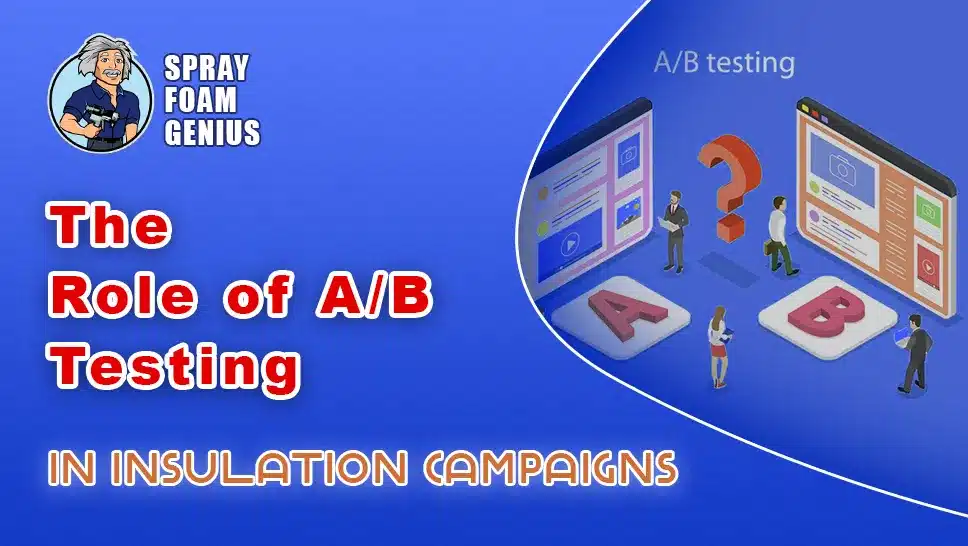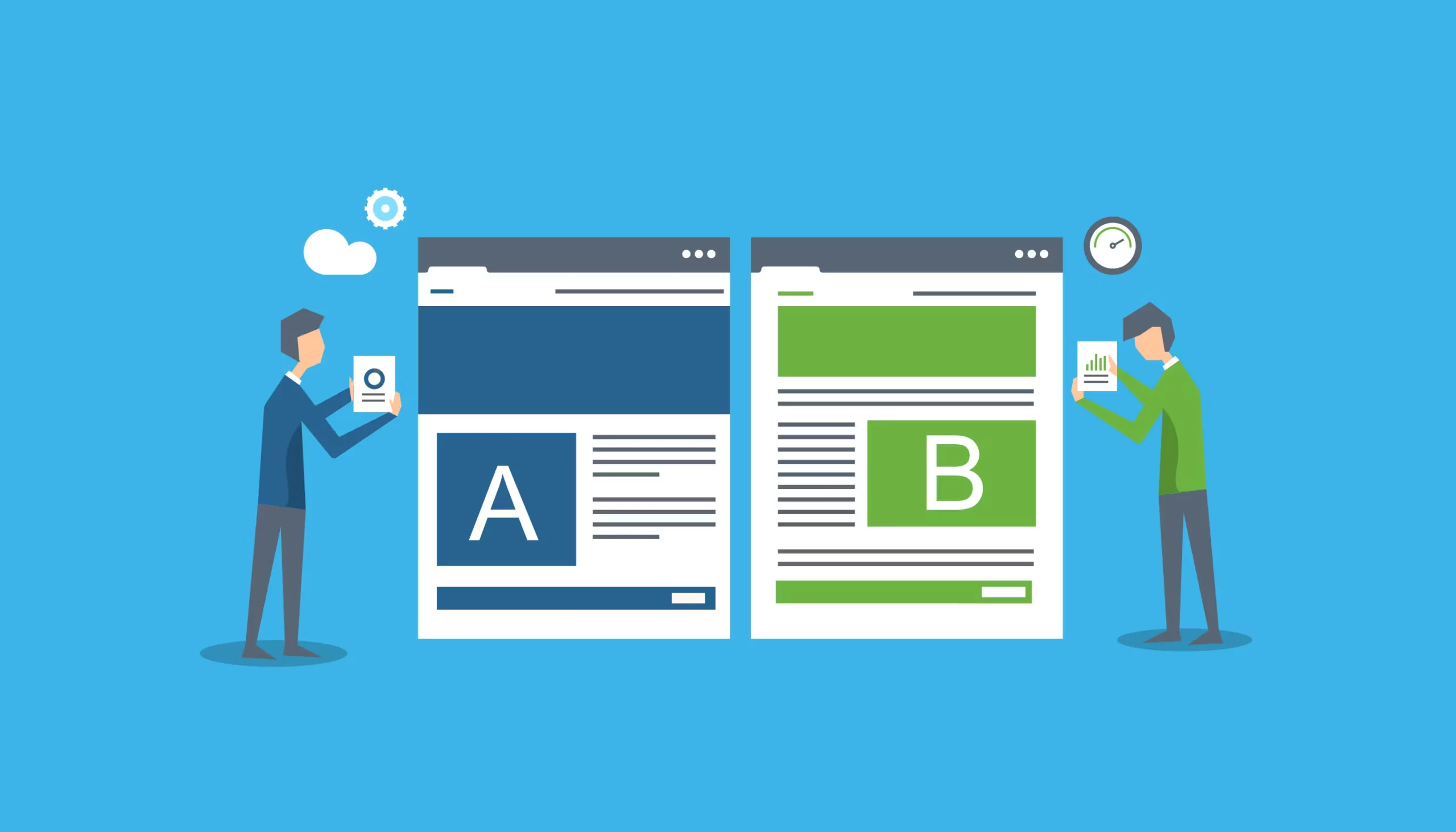
In today’s fast-paced digital landscape, insulation contractors in the USA and Canada must adopt innovative marketing strategies to stand out from the competition. One such strategy is A/B testing, a powerful tool that can significantly enhance the effectiveness of insulation campaigns. By systematically comparing two versions of a campaign element, A/B testing helps businesses identify which approach resonates better with their target audience, ultimately leading to higher engagement and conversion rates.
At Spray Foam Genius Marketing, we understand the unique challenges faced by insulation contractors. Our expertise in SEO, Google Business Profile optimization, and lead generation enables us to support your marketing efforts. In this post, we’ll explore the role of A/B testing in your insulation marketing campaigns and provide actionable insights to maximize your marketing effectiveness.
Understanding A/B Testing
What is A/B Testing?
A/B testing, also known as split testing, involves comparing two versions of a marketing asset—such as an email, landing page, or advertisement—to determine which one performs better. By changing one variable at a time, businesses can gain valuable insights into consumer preferences and behaviors. The version that yields the highest conversion rate is deemed the winner and can be implemented in future marketing efforts.
Why A/B Testing Matters for Insulation Contractors
As insulation contractors, the goal of your marketing efforts is to attract potential customers and convert them into leads. A/B testing allows you to:
- Enhance Engagement: By testing different elements, such as headlines or calls to action, you can discover what captivates your audience’s attention.
- Improve Conversion Rates: Small changes can lead to significant improvements in conversion rates, ultimately driving more business.
- Make Data-Driven Decisions: Rather than relying on assumptions, A/B testing provides concrete data to guide your marketing strategies.
Implementing A/B Testing in Your Marketing Campaigns
1. Identify Your Goals
Before embarking on an A/B testing journey, it’s crucial to define clear objectives. What do you hope to achieve? Whether it’s increasing website traffic, improving click-through rates on emails, or boosting form submissions, establishing specific goals will help guide your testing process.
2. Choose the Right Elements to Test
When implementing A/B testing, focus on individual elements of your marketing materials. Some common elements to test include:
- Headlines: The first thing potential customers see. Experiment with different phrases to see which generates more interest.
- Images: Visual content can significantly impact user engagement. Test different images to find what resonates best with your audience.
- Calls to Action (CTAs): The wording and placement of your CTAs can greatly influence conversion rates. Try different variations to see what prompts more clicks.
3. Segment Your Audience
To obtain meaningful results, segment your audience based on relevant factors, such as demographics or behavior. This segmentation allows you to tailor your tests to specific audience segments, increasing the likelihood of success.
4. Conduct the Test
Once you’ve identified the variables to test and segmented your audience, it’s time to conduct the A/B test. Use a reliable testing tool that allows you to run experiments efficiently. Monitor performance metrics, such as click-through rates and conversion rates, to determine which version performs better.
5. Analyze Results
After the test concludes, analyze the results thoroughly. Look for statistical significance to ensure that the observed differences are not due to random chance. Tools like Google Analytics can help track your performance metrics and provide insights into user behavior.
6. Implement Findings
Once you’ve identified the winning version, implement the changes across your marketing channels. Use the insights gained from the A/B test to inform future campaigns, continuously optimizing your marketing strategy.
Best Practices for A/B Testing

1. Test One Element at a Time
To ensure the reliability of your results, test only one variable at a time. This approach makes it easier to identify what led to a change in performance.
2. Run Tests for Sufficient Duration
To achieve statistically significant results, run your tests long enough to gather ample data. A/B testing for a few days may not yield reliable insights; consider running tests for at least one to two weeks, depending on your traffic volume.
3. Use a Large Enough Sample Size
A larger sample size increases the reliability of your results. Ensure that you’re reaching enough users to draw meaningful conclusions from your tests.
4. Keep Records of Tests
Document your A/B tests, including hypotheses, results, and insights gained. This documentation serves as a valuable reference for future testing and decision-making.
5. Stay Agile and Adapt
A/B testing is an ongoing process. As your audience and market conditions evolve, remain agile and willing to adapt your strategies based on new data and insights.
Real-World Examples of Successful A/B Testing
Case Study 1: Email Marketing Campaign
An insulation contractor implemented A/B testing on an email marketing campaign. By testing two different subject lines, they discovered that a more personalized approach significantly increased open rates. As a result, they refined their email marketing strategy, leading to higher engagement and more leads.
Case Study 2: Landing Page Optimization
Another insulation contractor tested two versions of their landing page—one with a simple design and another with a more elaborate layout. The simpler design outperformed the complex one, resulting in increased form submissions and higher conversion rates. This insight prompted them to simplify their website design across other pages as well.
The Impact of A/B Testing on Your Business
Implementing A/B testing can have a transformative effect on your insulation business. By optimizing your marketing campaigns, you can:
- Increase Lead Generation: Enhanced engagement and conversion rates lead to more qualified leads, ultimately resulting in increased sales.
- Improve Marketing ROI: By identifying the most effective marketing strategies, you can allocate your budget more efficiently and maximize your return on investment.
- Stay Competitive: A/B testing allows you to keep pace with market changes and consumer preferences, ensuring your marketing efforts remain relevant and effective.
Take Action: Optimize Your Marketing Strategy Today!
Now that you understand the vital role A/B testing plays in maximizing marketing effectiveness, it’s time to put this knowledge into action. At Spray Foam Genius Marketing, we specialize in helping insulation contractors like you optimize their marketing strategies. Whether you need assistance with A/B testing, SEO, or lead generation, our experienced team is here to support you.
Contact us today at 877-840-FOAM for the USA or 844-741-FOAM for Canada, or visit sprayfoamgeniusmarketing.com to learn more about how we can help you grow your business. You can also reach us via email at [email protected].
Maximize your marketing effectiveness and watch your insulation business thrive!
- 5 Google My Business Hacks to Double Your Leads for Spray Foam Insulation Contractors - January 14, 2025
- Why Spray Foam Contractors Cannot Ignore Reputation Management in 2025 - January 13, 2025
- Local SEO Secrets Every Spray Foam Contractor Must Know to Win in 2025 - January 13, 2025

